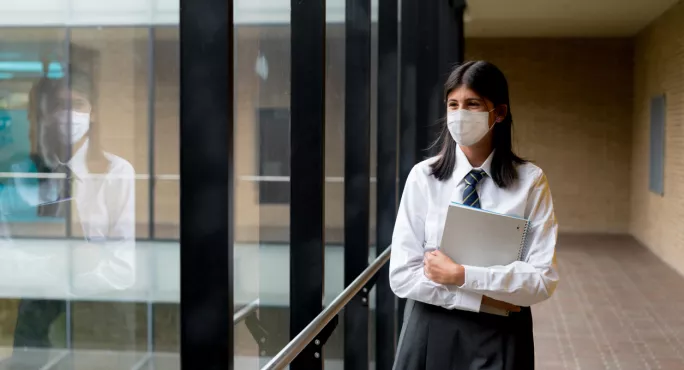Number of pupil Covid absences doubles in a week

The number of pupils off school as a result of Covid- either because they have the virus or are isolating - has doubled in a week in Scotland.
Scottish government figures, updated this afternoon, show that on Tuesday of last week, 24 August, there were 16,166 Scottish pupils off school for Covid-19 related reasons, but on Tuesday of this week, 31 August, that figure rose to 33,171 pupils.
Overall attendance fell over the same period from 92.3 per cent to 87.7 per cent.
Background: New Covid rules fuel concerns over safety in schools
Also today: Teachers ‘at no greater risk of Covid hospitalisation’
Research: ‘Low percentage’ of pupil contacts develop Covid
News: Keeping schools open is ‘top of the list’, says Sturgeon
On Tuesday, 4.6 per cent of pupils were not in school because of the coronavirus - up from 2.2 per cent on Tuesday of last week, when the EIS teaching union said the rise in Covid cases linked to Scottish schools was “a significant cause for concern”.
The union has already called for all close contacts of positive cases to be required to get a clear PCR test before returning to class.
More pupils absent from school as Covid cases surge
The EIS says - as a result of the changes to rules on self-isolation - it is now “practically impossible” for a close contact in school to be required to self-isolate until tested, unless they have also, for example, stayed overnight at the child’s house.
Meanwhile, headteachers have told Tes Scotland that, given the changes, they feel powerless to act and one summed up the feelings of many school leaders by warning that the coronavirus “is going to rip through schools with vulnerable pupils and staff forgotten”.
Scottish government guidance states that there is now a particular focus on household contacts; for example, siblings or social settings involving prolonged contact, including sleepovers.
It says that “simply being seated next to a positive case in class will not necessarily result in a requirement to self-isolate and take a PCR test”.
The Scottish government has admitted that the return to school has contributed to the recent surge in Covid cases, which has been described by first minister Nicola Sturgeon as “extremely concerning”.
On Tuesday, almost half of students at an East Dunbartonshire secondary school were absent as a result of Covid: more than 400 pupils did not attend St Ninian’s High in Kirkintilloch, which has a school roll of 850.
The Westminster government has said that England can avoid a steep rise in coronavirus cases as schools return by using more effective Covid testing measures than in Scotland, with Covid-19 testing stations installed in schools, rather than allowing pupils to take lateral flow tests at home.
The i has reported that Department for Education officials believe that because the tests are supervised, they will result in greater uptake and improved accuracy of results, helping to identify cases more effectively than in Scotland.
At the end of the 2020-21 school year, in June, Scottish education secretary Shirley-Anne Somerville said that she wanted to improve uptake of lateral flow tests available in schools.
In a bid to stem the spread of the coronavirus when Scottish schools returned following the post-Christmas lockdown, school staff and secondary students were offered twice-weekly Covid home-testing kids.
However, official figures published in June showed that since schools started returning, just 30.6 per cent of senior students had taken at least one test and 18.8 per cent of students in S1-3.
Meanwhile, the figures showed that over a third of school staff had never taken a test, with 65.4 per cent accessing at least one test.
Register with Tes and you can read two free articles every month plus you'll have access to our range of award-winning newsletters.
Keep reading with our special offer!
You’ve reached your limit of free articles this month.
- Unlimited access to all Tes magazine content
- Save your favourite articles and gift them to your colleagues
- Exclusive subscriber-only stories
- Over 200,000 archived articles
- Unlimited access to all Tes magazine content
- Save your favourite articles and gift them to your colleagues
- Exclusive subscriber-only stories
- Over 200,000 archived articles